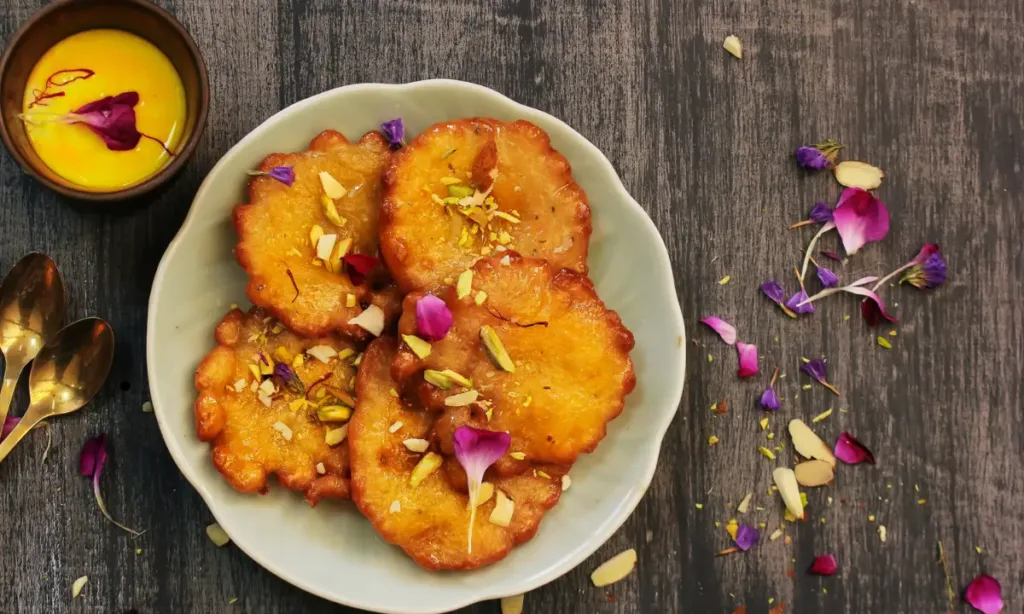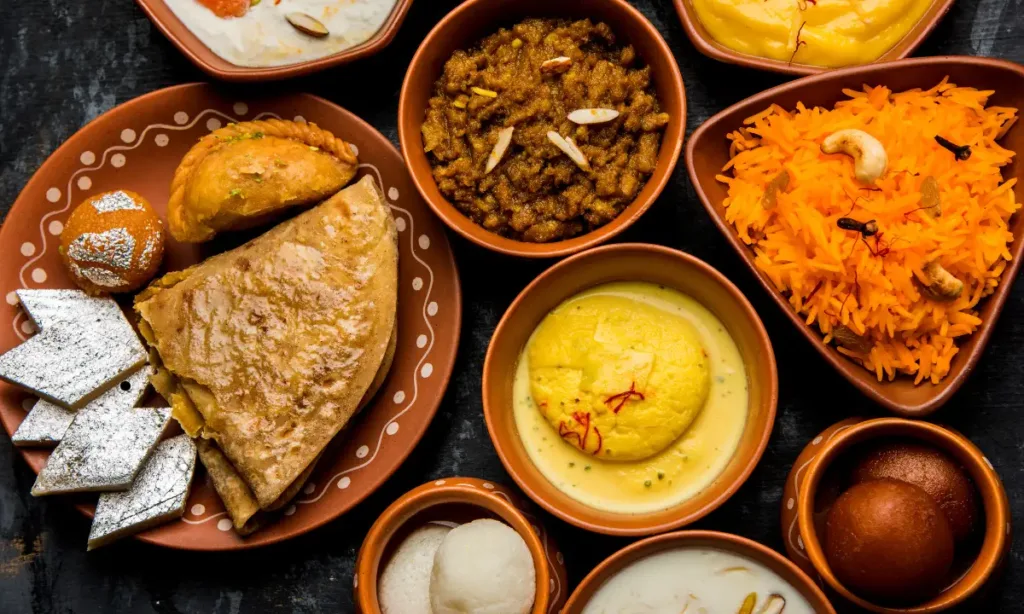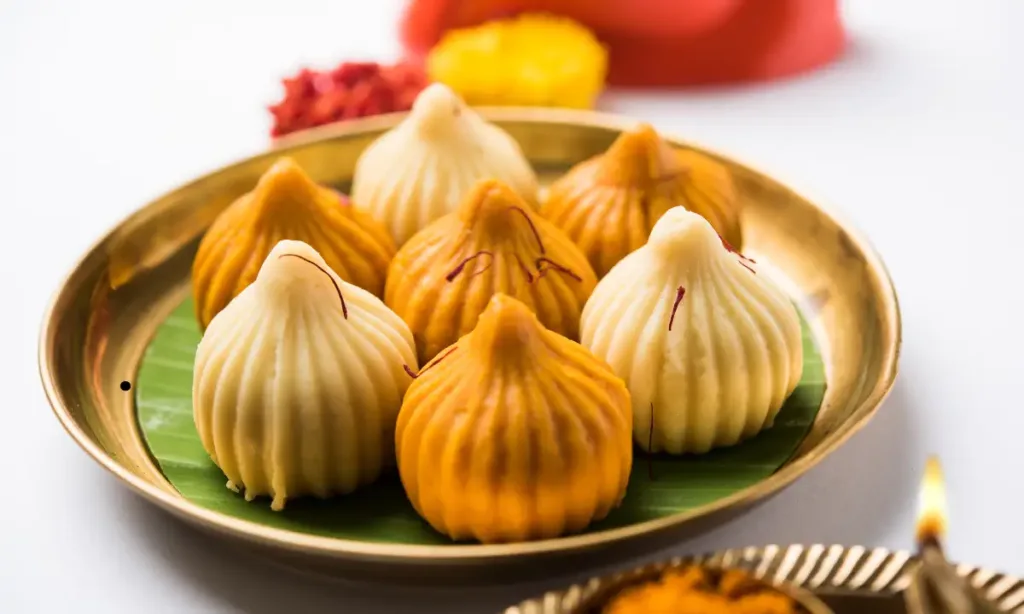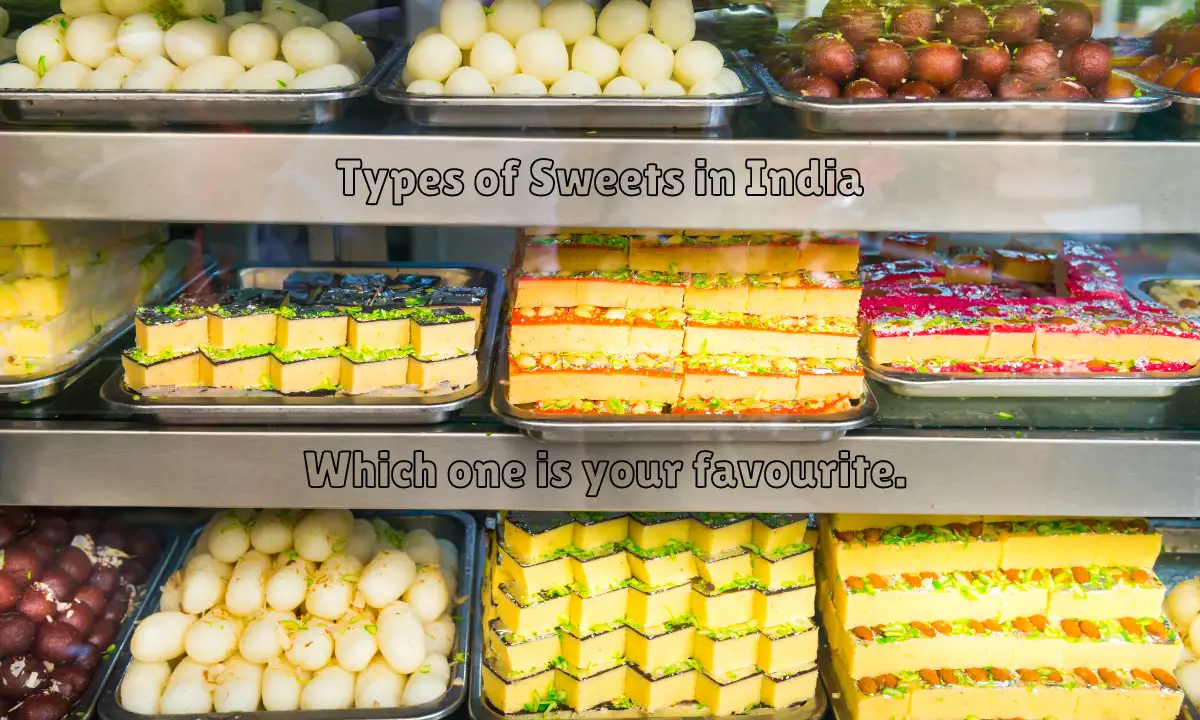India’s rich culinary heritage is incomplete without its vast assortment of sweets, or mithai. Whether it’s festivals, weddings, or religious rituals, sweets play a central role in Indian celebrations. The types of sweets in India vary dramatically across regions, influenced by local ingredients, customs, and techniques. From the syrupy richness of North Indian gulab jamuns to the delicate flavors of South Indian payasam, there’s a sweet for every occasion and every palate.
But here’s the thing: you might think you know Indian sweets, but what if I told you there are hundreds you’ve never heard of? Keep reading, and by the end of this article, you’ll discover sweets that could change the way you see desserts forever.
Types of Sweets in India: A Delicious and Diverse Tradition
India boasts a rich variety of sweets, with each region offering its unique flavors and ingredients. North India is famous for dairy-based sweets like gulab jamun and jalebi, while South Indian sweets like payasam and kozhukattai feature rice, coconut, and jaggery. In the east, Bengali sweets such as rasgulla and sandesh are chhena-based, while West Indian sweets like shrikhand and ghevar highlight the region’s love for nuts and spices. These sweets are deeply intertwined with Indian culture, festivals, and daily life.
History and Cultural Importance of Sweets in India
The tradition of sweets in India goes beyond mere indulgence—it’s deeply intertwined with history, religion, and culture. References to Indian sweets date back over 2,000 years, with early texts like the Mahabharata mentioning ladoos as food for warriors. Over centuries, the types of sweets in India evolved, influenced by the Mughal Empire’s Persian culinary techniques and the arrival of European colonialists who introduced refined sugar.
Before sugar became a staple, jaggery and honey were used to sweeten traditional desserts. Even today, regions like West Bengal and Odisha continue using nolen gur (date palm jaggery) to create nuanced flavors in sweets like sandesh and pithe.
Sweets also carry spiritual weight. They are believed to purify the body and mind, which is why they are offered to deities during festivals like Diwali and Raksha Bandhan. Indian sweets serve as a cultural bridge across states, religions, and communities.
Unique Twist
Indian sweets aren’t limited to vegetarian recipes. In certain regions, sweets like mutton halwa are made with meat, offering a unique twist on traditional desserts. Intricate and lesser-known, such sweets make Indian cuisine truly extraordinary.
Also read Top 10 Tea Manufacturing Companies in India: A Comprehensive Guide to the Best Tea Brands.

North Indian Sweets
North India is known for its rich, indulgent sweets, many of which are made with dairy products like milk, ghee, and khoya. The types of sweets in India originating from the northern states are famous for their bold flavors and heavy use of sugar syrup.
- Gulab Jamun: Soft, syrupy treats made from khoya, soaked in rose-flavored sugar syrup.
- Jalebi: Crispy, spiral-shaped delicacies dipped in sugar syrup.
- Ladoo: Available in many variations, like besan ladoo and til ladoo, served during festivals.
Did you know that petha from Agra, made from ash gourd, is one of the most recognized GI-tagged sweets in India? It was said to be created during the construction of the Taj Mahal for the workers.
South Indian Sweets
South Indian sweets are often lighter and made with ingredients like jaggery, rice, coconut, and lentils. These sweets are deeply tied to traditional festivals and rituals, offering a delicate balance of sweetness and earthy flavors.
- Mysore Pak: A ghee-laden fudge made from gram flour, originating from the royal kitchens of Mysore.
- Kozhukattai: A steamed rice dumpling filled with coconut and jaggery, popular during Ganesh Chaturthi.
South Indian temples are famous for offering sweets as prasadam. Sweets like payasam come in many varieties, such as semiya payasam (vermicelli) and paruppu payasam (lentil).
Fun Fact
Did you know that South Indian sweets are often made with jaggery instead of sugar? This adds a deep, molasses-like flavor that complements the sweetness of these desserts.

East Indian Sweets
East India, particularly West Bengal and Odisha, is renowned for its chhena-based sweets. These sweets are known for their melt-in-your-mouth texture and subtle sweetness, often using jaggery or date palm syrup.
- Rasgulla: Soft, spongy balls made from chhena soaked in light sugar syrup.
- Sandesh: A delicately flavored chhena dessert, often garnished with pistachios or almonds.
- Chhena Poda: A lesser-known baked cheese dessert from Odisha with a caramelized crust.
Interesting Fact: The debate over the origin of rasgulla led to Odisha receiving the Geographical Indication (GI) tag for Odisha Rasgulla in 2019.

West Indian Sweets
West India offers a variety of sweets, with rich flavors influenced by the region’s climate and culture.
- Modak: A rice flour dumpling filled with coconut and jaggery, offered to Lord Ganesha during Ganesh Chaturthi.
- Shrikhand: A creamy yogurt-based sweet flavored with saffron and cardamom, popular during Janmashtami.
- Ghevar: A disc-shaped sweet soaked in sugar syrup, often served with malai or rabri.
Expert Insight: Goa’s Portuguese influence brings desserts like bebinca, a layered pudding made from coconut milk, often served during Christmas.
Popular Ingredients in Indian Sweets
Indian sweets rely on core ingredients that give them their distinct flavors:
- Dairy: Milk, ghee, and khoya are the backbone of many sweets like gulab jamun and rasgulla.
- Jaggery: Used in place of sugar in traditional sweets like pithe and adhirasam.
- Spices: Cardamom and saffron are essential, adding depth to sweets like shrikhand and kheer.
- Nuts and Dried Fruits: Cashews, pistachios, and almonds frequently garnish sweets like kaju katli.
Sweets for Different Occasions
Sweets are deeply connected to celebrations and milestones in India:
- Religious Ceremonies: Sweets like modaks for Ganesh Chaturthi and til ladoos for Makar Sankranti.
- Weddings: Sweets symbolize good luck and joy, often exchanged between families.
- Festivals: Diwali, Holi, and Eid all have their unique sweets, such as gujiya, jalebi, and sewaiyan.
Regional Sweets and Their Geographical Importance
Indian geography plays a crucial role in shaping the diversity of sweets:
- North India: Dairy-rich sweets like halwa and barfi, influenced by colder climates.
- South India: Rice and coconut-based sweets like payasam and unniyappam, ideal for tropical weather.
- East India: Chhena-based sweets like rasgulla and sandesh, perfect for the region’s humidity.
- West India: Arid regions favor sweets like ghevar and mohanthal, which store well in dry conditions.
Conclusion
The types of sweets in India are a reflection of the country’s cultural and geographical diversity. From North to South, East to West, every region brings its unique flavors to the table, whether it’s the dairy-rich sweets of the north, the coconut-laden delicacies of the south, or the chhena-based sweets from the east. Indian sweets aren’t just desserts—they are integral to celebrations, rituals, and daily life.
Exploring these sweets offers a glimpse into India’s history and cultural heritage. The next time you indulge in a traditional Indian sweet, remember that you’re tasting centuries of culinary evolution. So why not try a new sweet during your next festival or celebration and experience a piece of India’s rich heritage?
